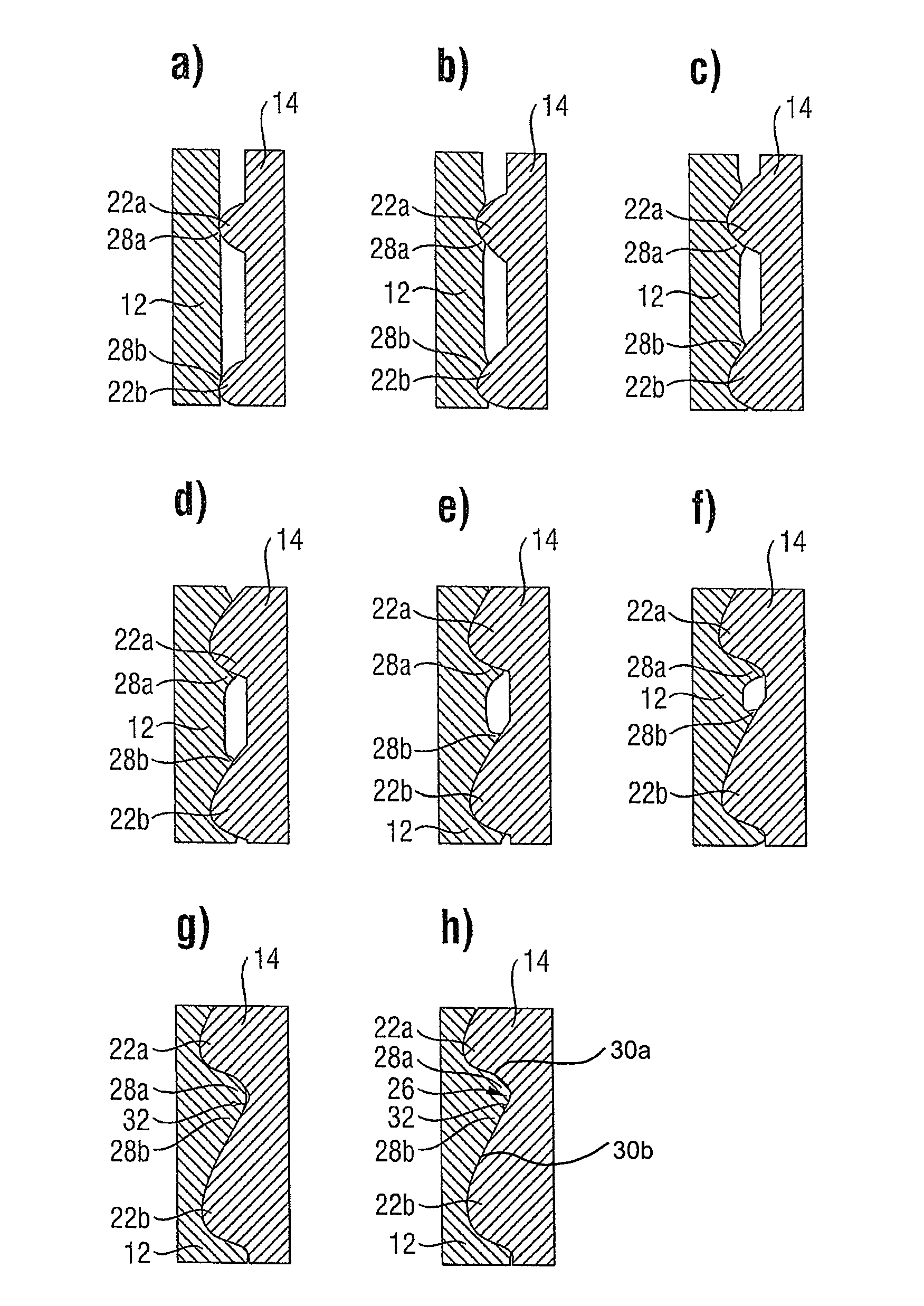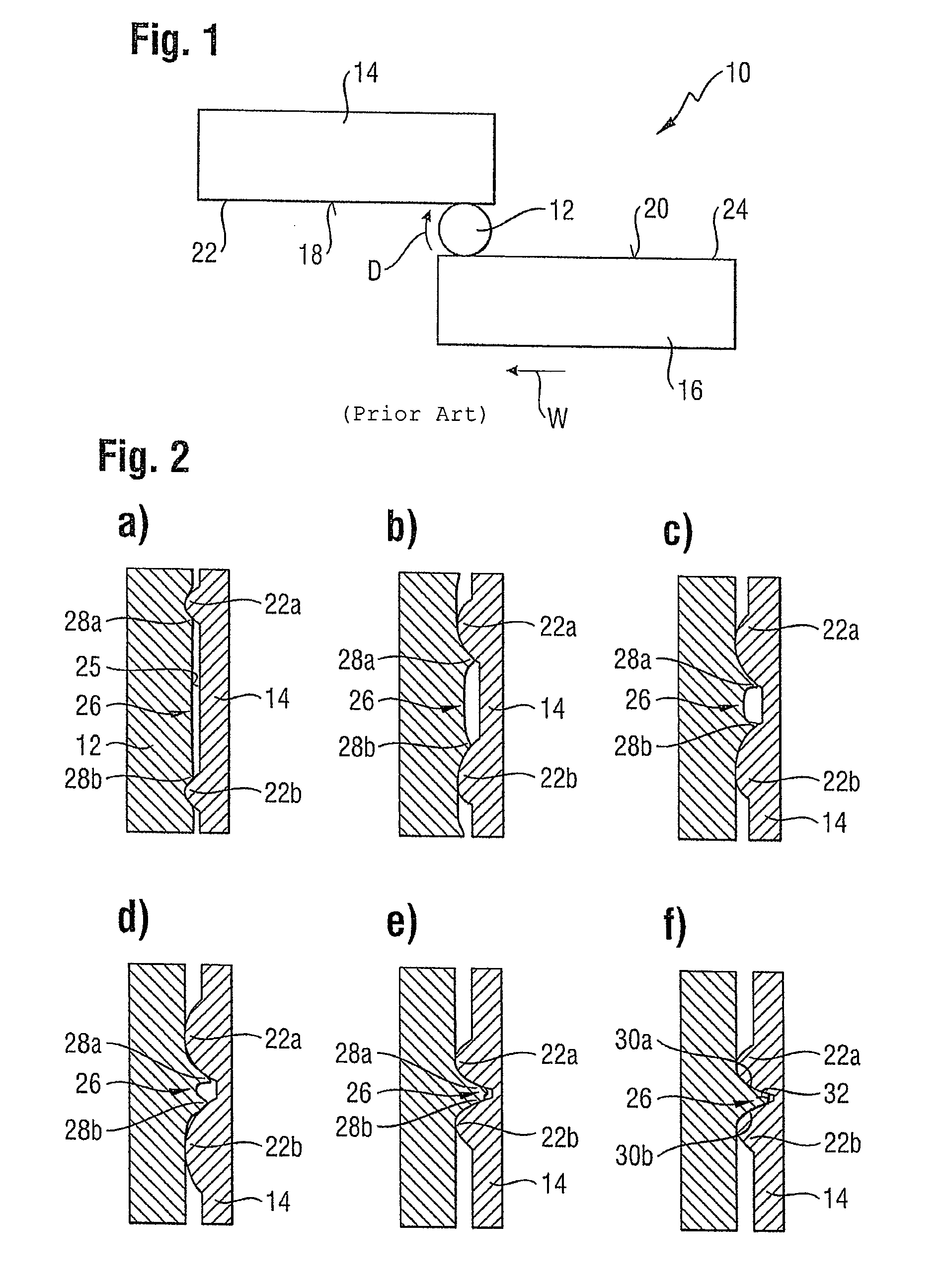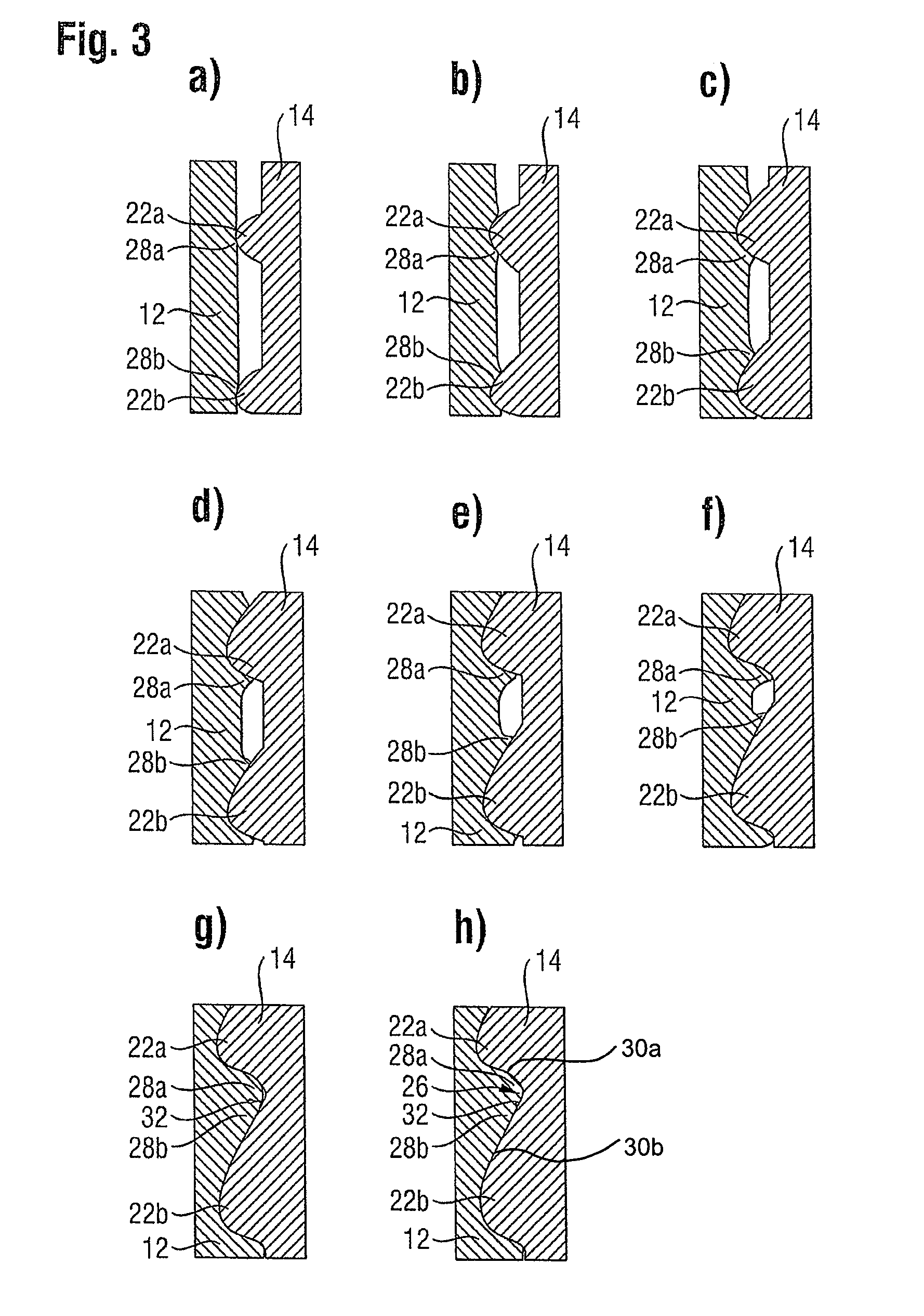Screw method for forming a screw thread
a screw thread and screw technology, applied in the field of screw threads, can solve the problem that the two ridges of material cannot be completely joined, and achieve the effect of improving the resistance to wear and tear
- Summary
- Abstract
- Description
- Claims
- Application Information
AI Technical Summary
Benefits of technology
Problems solved by technology
Method used
Image
Examples
Embodiment Construction
[0021]FIG. 1 schematically shows an arrangement 10 for rolling a thread of a screw in an essentially cylindrical screw blank 12. This arrangement consists essentially of two rolling dies 14, 16 that each have a rolling surface 18 and 20, respectively. The rolling surfaces 18, 20 are oriented parallel to each other and each have a profile 22 and 24, respectively. The first rolling die 14 is arranged so as to be stationary here, while the second rolling die 16 can be moved linearly parallel to its rolling surface 20 in a rolling direction W as well as parallel to the first rolling surface 18.
[0022]In order to form a thread, the blank 12 is positioned between the two rolling dies 14, 16, and the second rolling die 16 is subsequently moved in the rolling direction W. In this process, the blank 12 is rolled between the two rolling dies 14, 16 in a rotational direction D, whereby a thread is formed circumferentially in the blank 12 by several consecutive profiles 22, 24. For purposes of r...
PUM
| Property | Measurement | Unit |
|---|---|---|
| thread flank angles | aaaaa | aaaaa |
| thread flank angles | aaaaa | aaaaa |
| angles | aaaaa | aaaaa |
Abstract
Description
Claims
Application Information
 Login to View More
Login to View More - R&D
- Intellectual Property
- Life Sciences
- Materials
- Tech Scout
- Unparalleled Data Quality
- Higher Quality Content
- 60% Fewer Hallucinations
Browse by: Latest US Patents, China's latest patents, Technical Efficacy Thesaurus, Application Domain, Technology Topic, Popular Technical Reports.
© 2025 PatSnap. All rights reserved.Legal|Privacy policy|Modern Slavery Act Transparency Statement|Sitemap|About US| Contact US: help@patsnap.com



